Splunk Cloud SAML integration
Multi-factor authentication (MFA) is an extra layer of security used when logging into websites or apps to authenticate users through more than one required security and validation procedure that only you know or have access to.
Security Assertion Markup Language (SAML) is a protocol for authenticating to web applications. SAML allows federated apps and organizations to communicate and trust one another’s users.
Arculix™, as a SAML provider, improves the user login experience for Splunk Cloud users with smart and convenient single sign-on (SSO) MFA.
Prerequisites
Configured Arculix instance and user account with administrative privileges for Arculix.
Configured Arculix LDAP Agent.
For more information, see the Arculix LDAP Agent deployment guide.
User account with administrative access for Splunk Cloud.
Splunk Cloud configuration
In this section, you will configure Splunk Cloud as a service provider.
Download the SAML metadata and certificate for your organization from Arculix.
Metadata download:
https://sso.acceptto.com/<myorganization>/saml/download/metadataView metadata:
https://sso.acceptto.com/<myorganization>/saml/metadataCertificate download:
https://sso.acceptto.com/<myorganization>/saml/download/certLog in to your Splunk Cloud portal as an administrator at
https://<yourtenant>.splunkcloud.com.In the top navigation bar, select the Settings tab and click Authentication Methods.
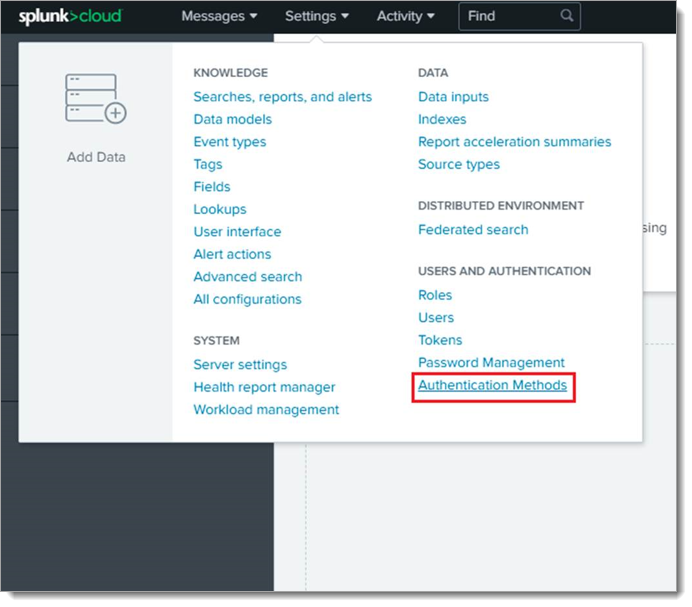
Select the SAML option and click SAML Settings.

On the SAML Configuration page, do the following:
SP Metadata File
Download the Splunk metadata for the SAML Service Provider Configuration in Arculix.
Metadata XML File
Upload the Arculix metadata file downloaded earlier.
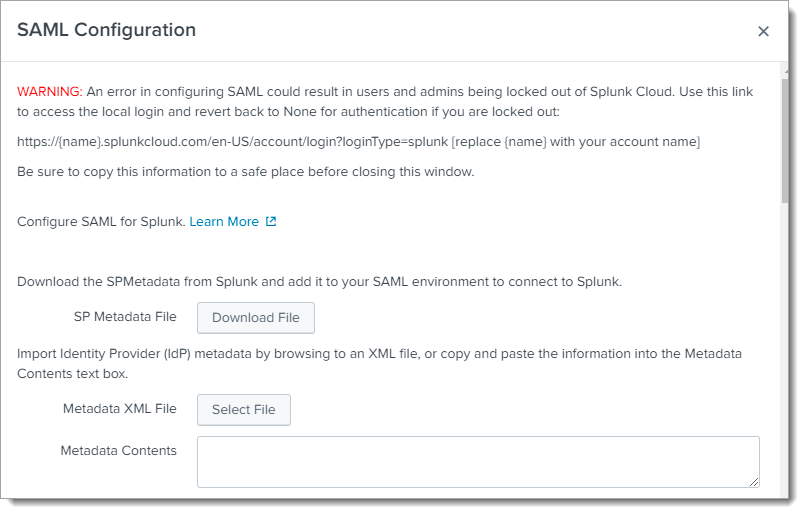
Click Apply.
Some fields in the General Settings section will automatically populate with Information from the uploaded Arculix metadata.
In the General Settings section, set the following configurations:
Entity ID
Set to your Splunk URL or a unique name.
For example, SplunkEntity.
Sign AuthnRequest
Select this check box.
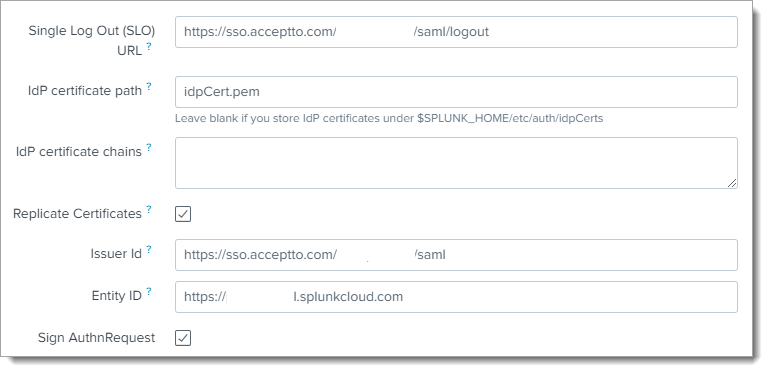
In the Alias section, set Role alias to a unique value.
For example, Role.
Note
The Role alias value must match the Name value that you set for Asserted Attributes in the SAML Service Provider Configuration in Arculix.

In the Advanced Settings section, set the following configurations:
Name Id Format
Select Email Address.
Fully qualified domain name or IP of the load balancer field
Set to
https://0.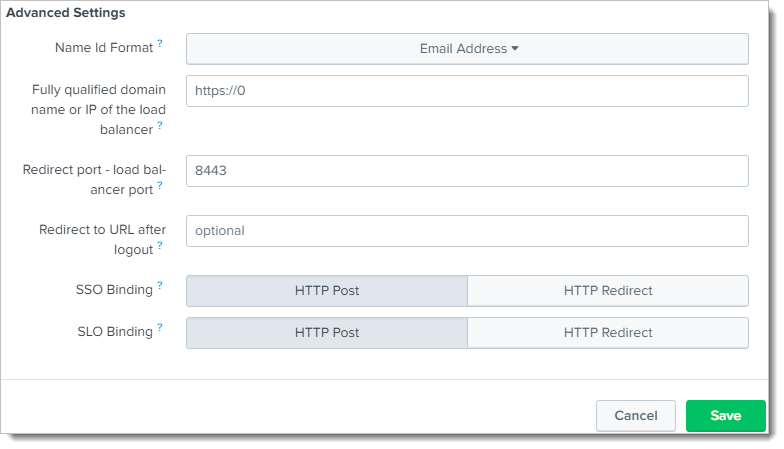
Click Save.
In the top navigation bar, select the Settings tab and click Authentication Methods.
Select SAML Settings.
In the Create New SAML Group section, set the following configurations:
Group Name
Set to a unique name.
The name for this group must match the Group Name of Splunk users in your Active Directory.
Splunk Roles
Select one or more of the roles in the Available item(s) column.
Note
An error in configuring SAML could result in users and admins being locked out of Splunk Cloud.
If you are locked out, use the following link to access the local login and revert back to None for authentication:
https://splunk.example.com:8000/en-US/account/login?loginType=splunk.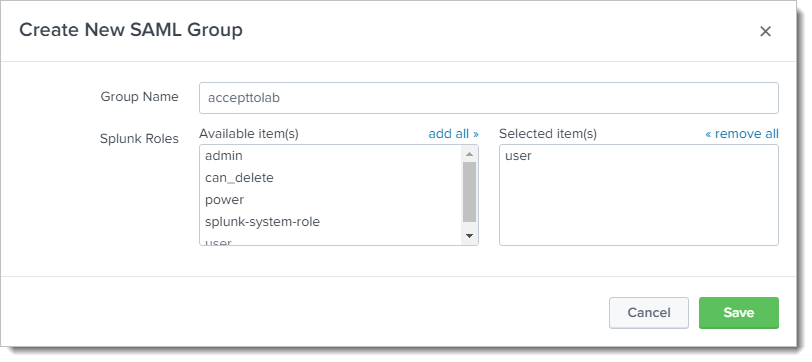
Arculix SAML configuration as an Identity Provider (IdP)
In this section, you'll add an application for Splunk Cloud and set the SAML configuration settings. This will be the Identity Provider (IdP) side of the configuration.
Log in to Arculix with an administrative account and go to Applications.
Click Create New Application.
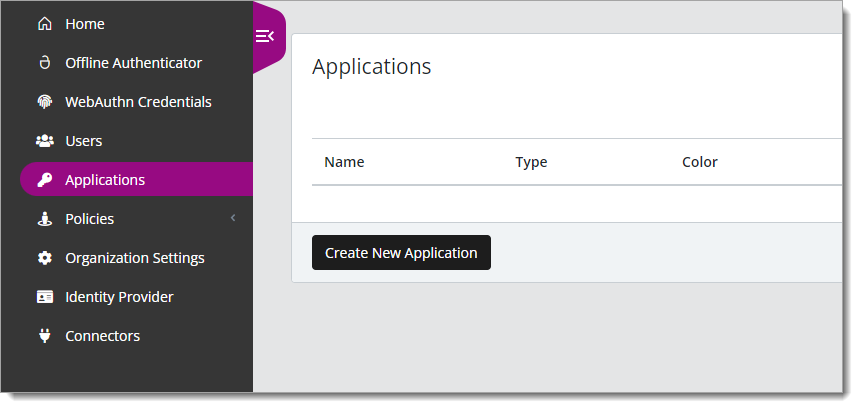
In the New Application form, on the General tab, set the following configurations:
Name
Set the name of the application. This is the name to display for push notifications, in the Admin panel, Application portal, and audit logs.
For example, Splunk Cloud.
Type
Set to SAML Service Provider.
Out of Band Methods
Select the allowed methods end users can choose to approve MFA requests.
For example, Arculix Mobile app (push notifications), SMS, or Security Key.
Message for MFA Requests
Optional. Type a message displayed to end users when sending an MFA request via push notification, SMS, or email.
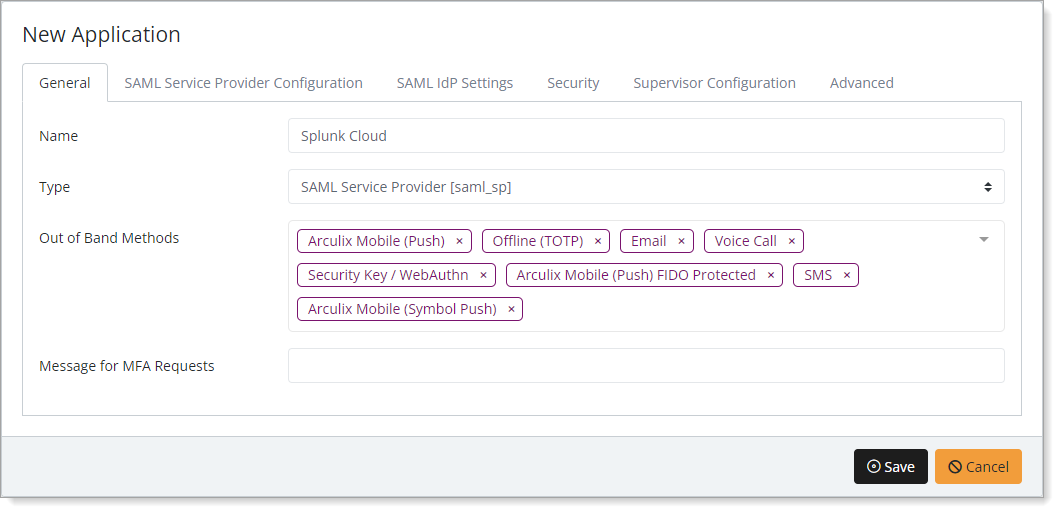
Select the SAML Service Provider Configuration tab, and set the following configurations:
Issuer or Entity ID
Enter the same EntityID set during Splunk Cloud configuration.
For example,
https://<yourtenant>.splunkcloud.com.Log in URL
This login URL is the same as your Splunk Cloud URL.
For example,
https://<yourtenant>.splunkcloud.com.NameID Format
Set to Email Address.
Name Identifier
Set to Email.
ACS URL
Enter the ACS URL provided in the Splunk metadata file.
The URL should follow this format:
https://<yourtenant>.splunkcloud.com/saml/acs.Single Logout URL
Enter the single logout URL provided in the Splunk metadata file.
The URL should follow this format:
https://<yourtenant>.splunkcloud.com/saml/logout.Algorithm
Set to RSA-SHA256.
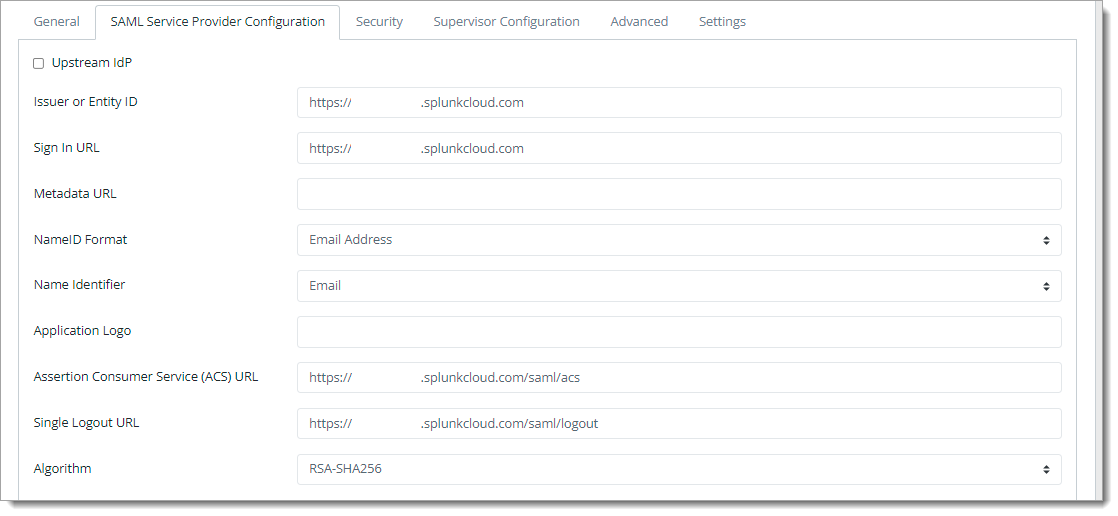
Go to the Add New Attribute Assertion section and set the following configurations:
Attribute 1 values
Friendly Name
Set to Role.
Name
Set to Role.
Note
The Name value must match the Role alias value set during Splunk Cloud configuration.
Value
Set to MemberOf.
Name Format
Leave as unspecified.
Attribute 2 values
Friendly Name
Set to Email.
Name
Set to emailaddress.
Value
Set to mail.
Name Format
Leave as unspecified.

Save your changes.
Test your application integration
Go to your Splunk Cloud URL.
You will be redirected to the Arculix SSO page.
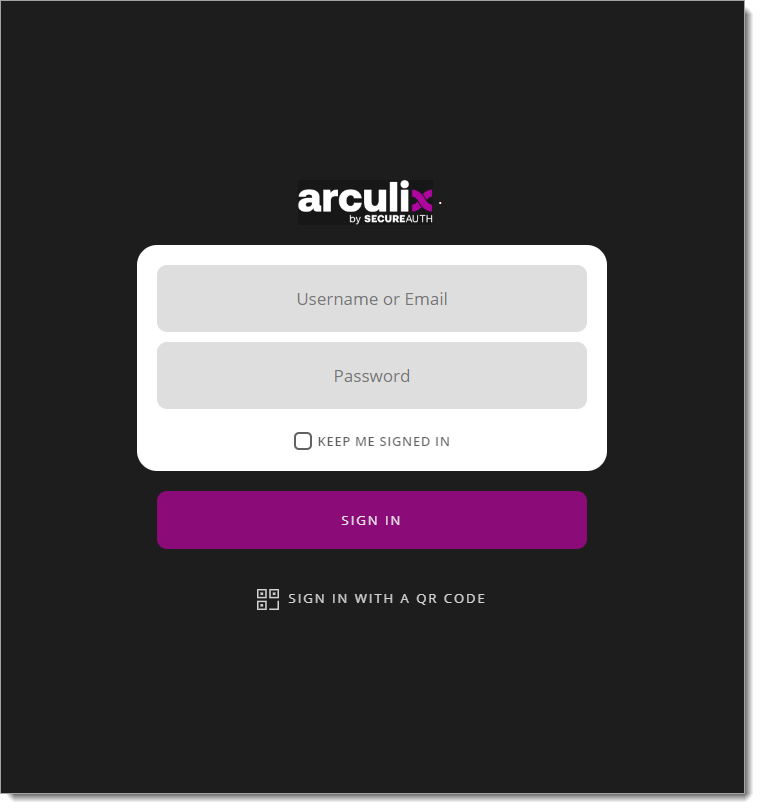
After successful authentication, select your preferred MFA method to approve access to the Splunk Cloud application.
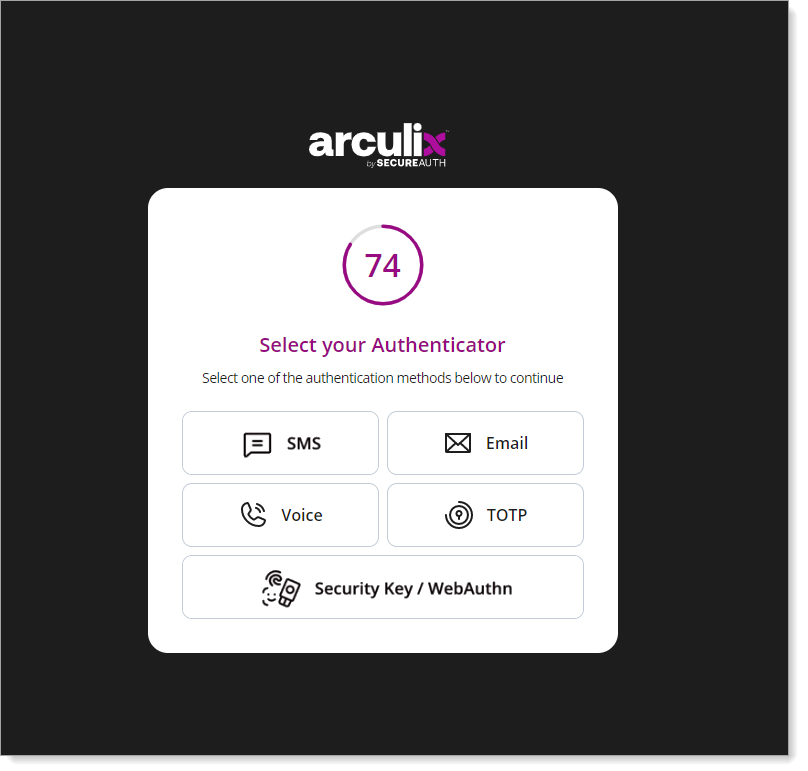
You will be redirected to your Splunk Cloud dashboard.
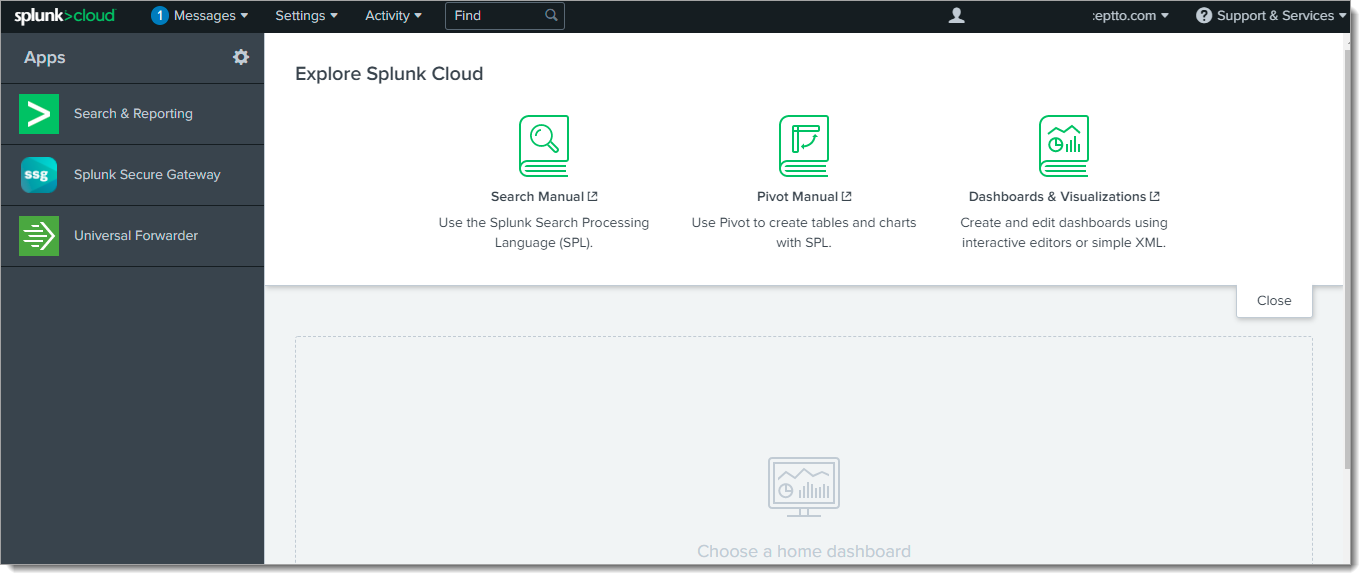
Support
If you have questions or need assistance, contact SecureAuth Support.
Sales
Want to learn more about our MFA solutions? Contact our Professional Services for a demo today.
Disclaimer
All product names, trademarks, and registered trademarks are the property of their respective owners.
All company, product, and service names used in this document are for identification purposes only. The use of these names, trademarks, and brands do not constitute an endorsement by the SecureAuth Corporation.